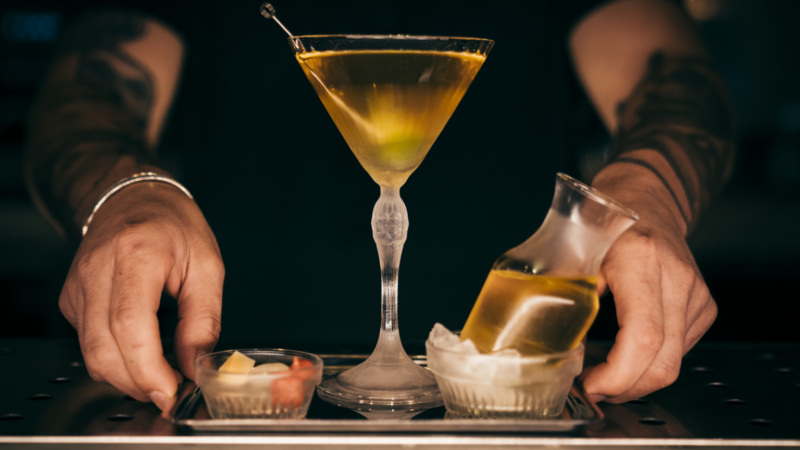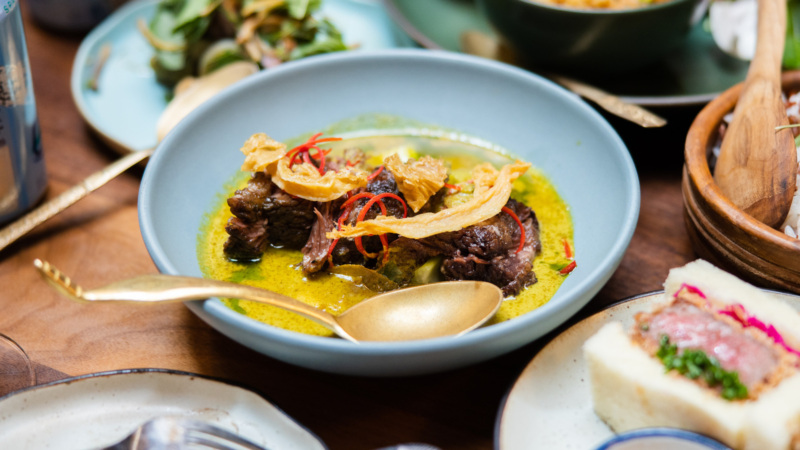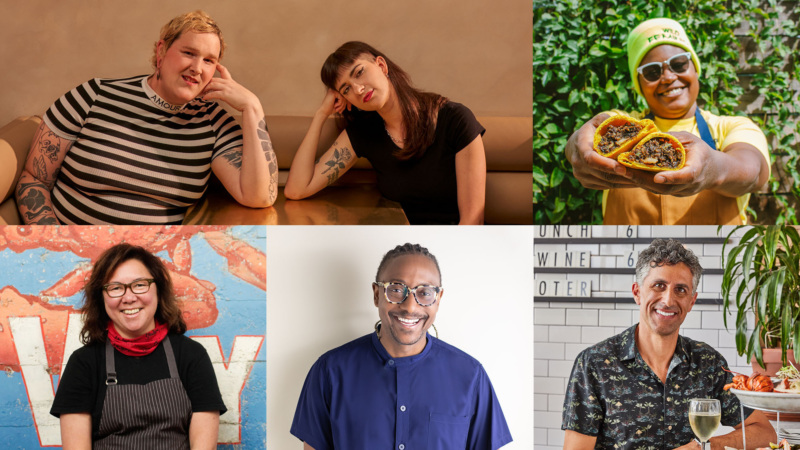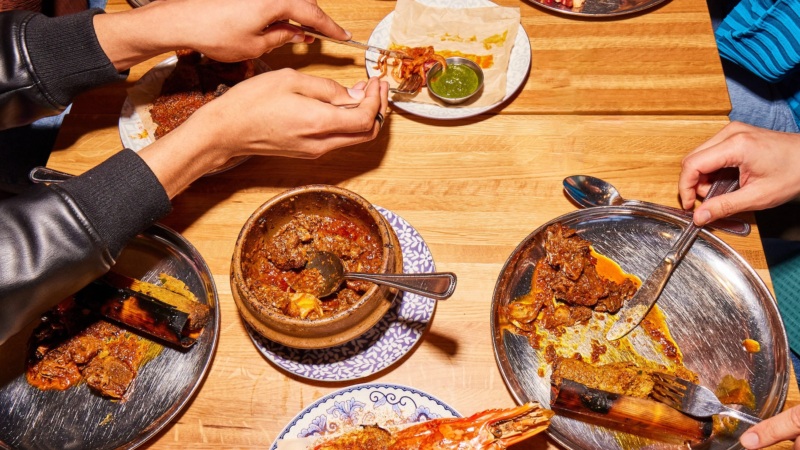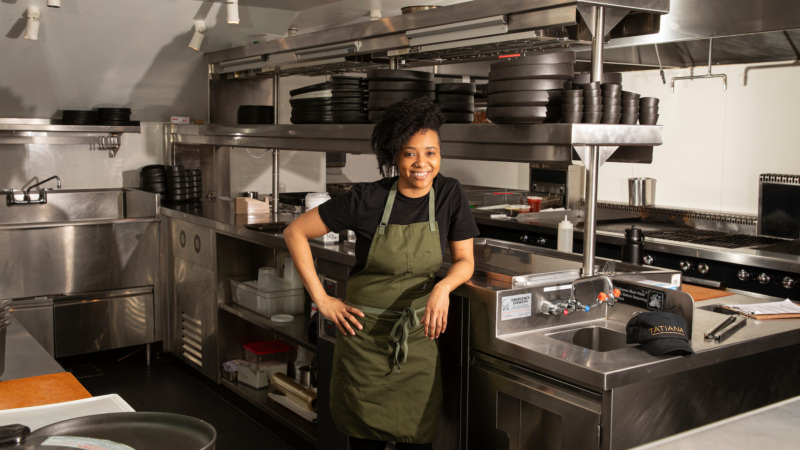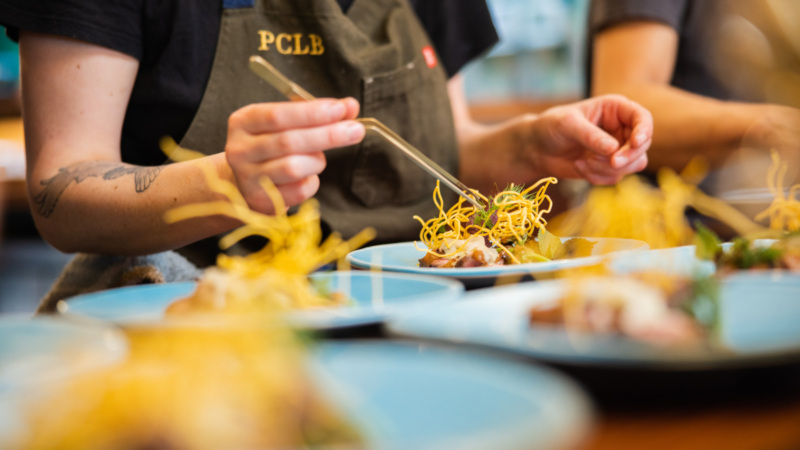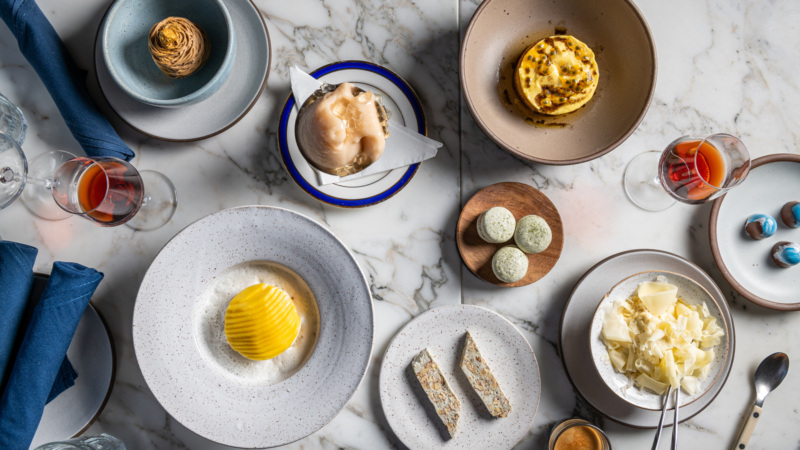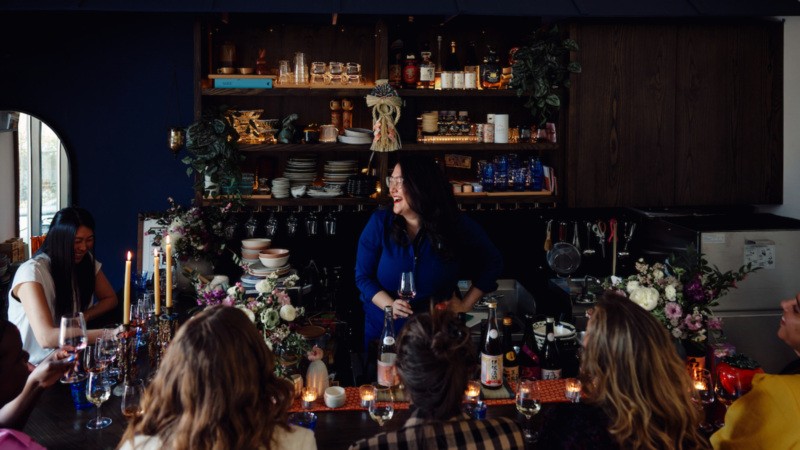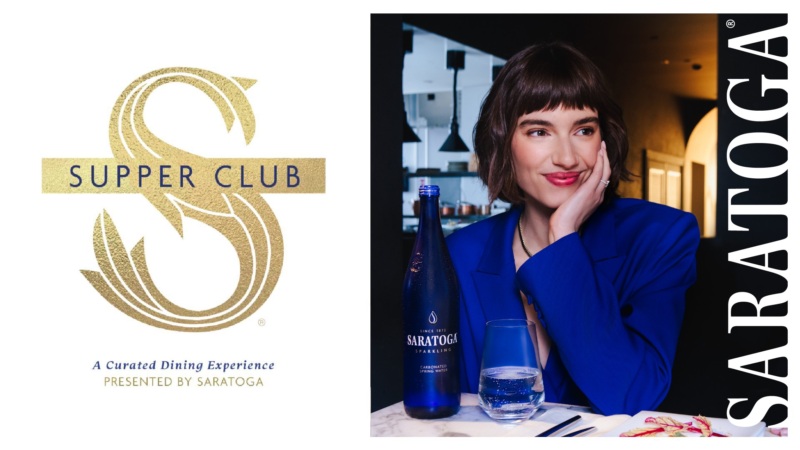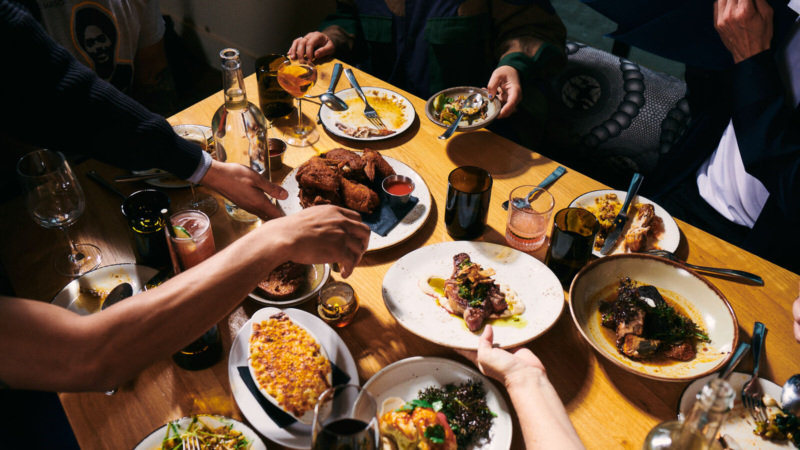

Dining Access Hit List National
40 Restaurants Across America Worth a Journey
Every great meal should be a journey. Not necessarily in that four-hour-tasting-menu, Willy Wonka, land-of-pure-imagination way. But it should transport you — to a Bangkok night market, or to your grandmother’s kitchen, or a thousand other places.
For that reason, we believe every journey should involve a great meal. And since it’s time to make travel plans for this summer and beyond, that also means it’s time to think about great restaurants worth including in your trip — perhaps even those meaningful enough to build a trip around.
Restaurant as destination? The notion is hardly new. Over a century ago, a certain tire company created a guide to support that idea, hoping to lure people out on the road. And a voyage to dine doesn’t have to be grandiose; Anthony Bourdain taught us this. Food as pleasure can be as easy as noodles slurped on plastic stools in a simple joint in Hanoi. (OK, it helps if the leader of the free world is on the stool across from you.) But it’s no coincidence: When we talk of the places we go, those stories are laden with memories — of a perfect seafood plate on the beach at Luquillo, of the moment you unwrap a pound of brisket in Texas hill country.
To honor restaurants that create such memories, we’ve compiled a list of 40 around the country worth making a special journey for. They come in all shapes and sizes. You might find yourself at Burdell in Oakland, exploring Geoff Davis’ vision of how soul food and California bounty come together; or land at Daru at Washington, D.C., or Saffron NOLA in the city’s Uptown neighborhood, to witness how Indian cooking has advanced on these shores. Or perhaps you’ll wind up at Miami’s Los Félix, where Sebastian Vargas has tales to tell of Mesoamerican traditions, using the language of hand-ground masa. Or at Saint Julivert in Brooklyn, where Alex Raij pursues a vision of seafood that’s utterly her own. In every case, these offer exclusive access to eligible American Express card members via Global Dining Access by Resy.
Taken together, they define some of the most compelling examples of what American dining is today, which is precisely what we try to capture each quarter in our Dining Access Hit List. Consider this a compilation of favorites, along with some recent arrivals that have charmed our local Resy contributors and deserve your immediate attention.
So whether your plans involve a trip across town, or across the country, these 40 restaurants will make your journey a bit more memorable. Get booking, and get out on the road to eat.
Resy Presents
Tables Worth a Trip
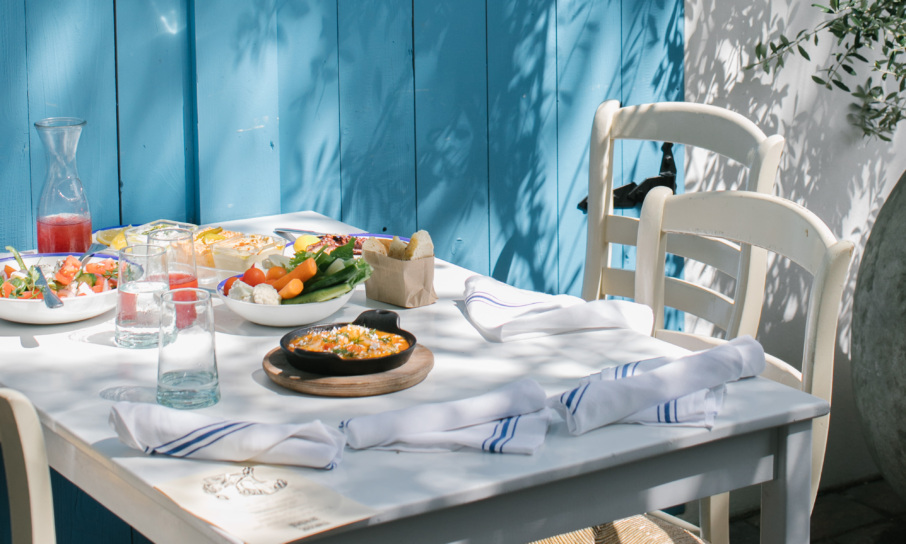
- Never Mind ‘Authentic.’ Fermin Núñez Is Defining the Mexican Food of Today
- At Dakar NOLA, New Orleans Cooking Finds a New Path to Its Roots
- At Houston’s March, Felipe Riccio Isn’t Afraid to Get Deep
- Why Burdell’s Debut Is So Special and Inspiring — Especially For Chefs
- How Tabachoy Celebrates Filipino Food and Culture, in Five Essential Dishes
- Anajak Thai’s Justin Pichetrungsi on What It Means to Be Unapologetic
1. Saint Julivert Fisherie NEW YORK | Cobble Hill
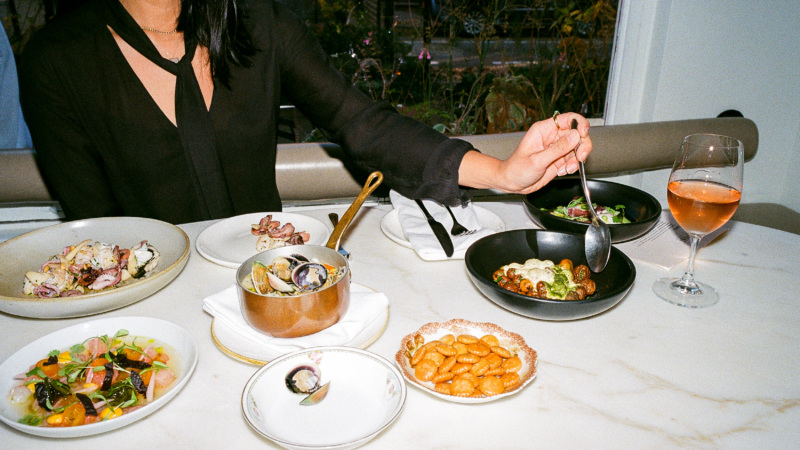
Photo by OK McCausland for Resy
Alex Raij and her husband Eder Montero are longtime staples in New York’s restaurant community, with their Spanish-inflected cooking at Txikito and La Vara. Their most recent restaurant, the seafood-focused Saint Julivert, opened in 2018, and if it feels uncategorizable, that might be because it is the creation of restaurateurs who are comfortable in their own skin. Raij refers to it as a “jewel box,” which seems apropos: a tiny, trim space with not an inch wasted — a quality it shares with fellow travelers like Place des Fêtes and Foul Witch. And while Raij was inspired by Parisian wine bars, years before the current deluge of Frenchy wine spots, the food here has global reach: cured wild shrimp with kumquat and poblano could evoke Sinaloa or southeast Asia; put them on your table next to sorrulitos, a Puerto Rican sort of hush puppy; and the cod pot pie. The last is a Raij masterpiece, more British than the British could devise, yet with sofrito and curry-leaf aioli. Add in her natural-tilting wine list, quirky desserts (mezcal flan, anyone?) and you have ecumenical cooking of the highest order.

Photo by OK McCausland for Resy
2. Burdell OAKLAND | Temescal
It’s not simply that Burdell is a great restaurant, namely because Geoff Davis is a great chef, earning his stripes at fine-dining icons like Aqua and Cyrus. It’s that Burdell is a significant restaurant — Davis’ love letter to flavors he’s loved since childhood in Modesto, and his way of telling a different tale of California cuisine. Sure, it’s fresh and local and informed by the seasons, but also it’s his rumination on exceptional soul-food stalwarts. In bringing those together, Burdell roots the story of a different Black American journey — to the west, where traditions and cultures sorted out in their own ways. He embraces how essential farming and fishing were in the various Great Migrations. Here waffles come with chicken-liver mousse; barbecue shrimp has a cheffy brown-butter touch; and a dish like broccoli and cauliflower with a red-eye vinaigrette and pig’s ears folds together manifold inspirations. Others have forged similar paths in the Bay Area, including Tanya Holland of Brown Sugar Kitchen. But Davis merges past and present in exceptional, and wonderfully hedonistic, ways.
3. Los Félix Miami MIAMI | Coconut Grove
Even in as urbane a city as Miami, Los Félix often gets pigeonholed as a Mexican restaurant. Yet chef Sebastian Vargas is from Colombia, as is Pili Restrepo Hackler, who handles the front of the house with her partner Josh Hackler. While you also might be temped, noting the tacos, totopos and esquites on the menu, to categorize it that way, the team defines their focus as Mesoamerican, and that choice says a ton about Los Félix’s importance. The traditions honored here are broader, including that of indigenous Milpa farming. The molino that grinds masa in house similarly evokes traditions that cross borders — an ecumenical, and very Miami view. Of course Vargas is also a remarkable talent, his experience in spots such as Osteria Francescana and Sweden’s Fäviken providing a precision and verve on the plate. (You sense similar energy in the team’s Krüs Kitchen.) Josh Hackler’s deft wine selection, and the presence of a DJ spinning vinyl, connect this back to 2024 South Florida. The sum is a thinking-person’s boîte. And like any good salon, this one serves carnitas.
4. Este AUSTIN | East Austin
“Coastal seafood” isn’t the most obvious play when it comes to a Mexican restaurant in landlocked Austin. But it makes brilliant sense when you know that chef Fermín Núñez and his business partner Sam Hellman-Mass, who made Suerte into one of the country’s most worthwhile Mexican restaurants, are keen to embrace a whole new side of Mexican tradition. The two spent time in cities on both Mexican coasts, gathering ideas. While you can pick out threads of influence — the shrimp tacos might nod to Ensenada, while the fish flautas take a cue from Oaxaca — the net effect is what Austinites have come to expect from Núñez: dishes that are their own sort of nuevo Mexican wonder, as with a whole Dover sole milanesa. It’s also Núñez’s way of paying homage to mariscos culture — where a lunch can unfurl over a whole afternoon. (That lunch can, incidentally, include Este’s exceptionally good burger.) Pro tip: Stop by Bar Toti next door, before or after, for drinks like a Cynar daiquiri and Nuñéz’s take on tapas.
5. Anajak Thai LOS ANGELES | Sherman Oaks
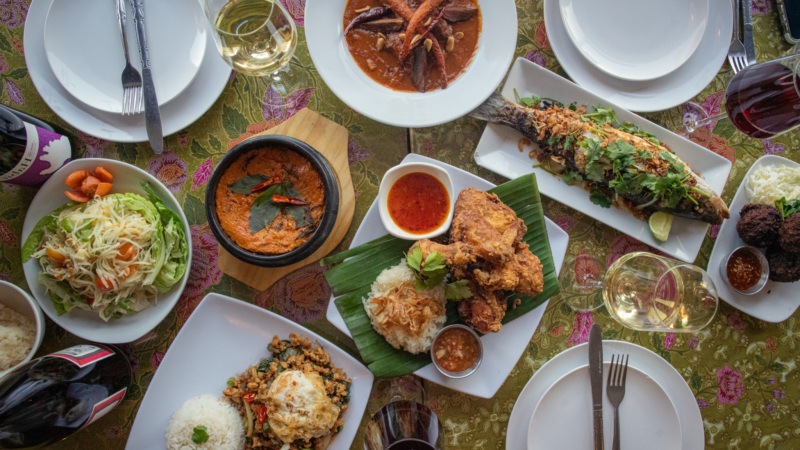
Photo courtesy of Anajak Thai
A few years ago, Justin Pichetrungsi sounded like yet another quixotic young chef — tuning up classic Thai dishes, entranced by naturally-leaning wines. Except Pichetrungsi’s restaurant was 40 years old, run for decades by his father Rick and mother Rattikorn, a Thai American staple in the Valley. And Justin wasn’t a chef by training; he’d been working as an art director for Disney. So was born one of L.A. dining’s great successes, with Anajak named L.A. Times’ Restaurant of the Year. It has become a living manifestation of the city’s evolution of Thai cooking. There’s the no-reservations Thai Taco Tuesdays in the alley next door; an intimate monthly omakase allows Pichetrungsi to lean into fascinations like dry-aged fish; and a regular menu includes cult hits like a Massaman brisket curry. And how many neighborhood Thai joints have multiple sommeliers, and wine lists deep in Burgundy?

Photo courtesy of Anajak Thai
6. Friday Saturday Sunday PHILADELPHIA | Rittenhouse Square
A dramatic example of how a restaurant can keep reinventing itself: Friday Saturday Sunday has been just off Rittenhouse Square for some 40 years, “the lone survivor,” as the Inquirer put it, of the city’s ‘70s restaurant renaissance. Current owners Chad and Hanna Williams, alumni of chef Jose Garces’ restaurant empire, bought FSS in 2015, renovated stem to stern, and turned an old reliable into something far more ambitious. Today Chad’s evocative tasting menus and Hanna’s keen eye for detail form a model for postmodern fine dining that’s actually fun. This is reflected in dishes that hew together Chad’s many influences, like a sweet-corn chawanmushi and quail with Jamaican coco bread. It’s deeply personal haute cooking by way of West Philly.
7. Obélix CHICAGO | River North
Oliver and Nicolas Poilevey’s bistro captures pretty much everything about the New French wave showing up in cities across the country. The food at Obélix is neither a faithful re-creation of Paris’ current neobistro scene, nor an homage to classics. It is, instead, very much its own thing. This carries import because the Poilevey family has run some of Chicago’s beloved French spots, namely Le Bouchon. And you could glance at the menu, see onion soup or choucroute, and think this followed suit. But a “foie-co” (Oliver co-opened Taqueria Chingón during the pandemic) and the lemongrass in the duck sausage, indicate something else afoot. And let’s just say “ratatouille pithivier” are two words we very much like seeing together. Add in Nicolas’ omnivorous, Gallic wine list, and you’ve got an ode to Frenchness that’s as wily as its namesake comic-book character.
8. La Semilla ATLANTA | Reynoldstown
If there’s a common thread to tie together Cuban and other Latin American cuisines, it might be … pork. But Sophia Marchese and Reid Trapani’s vegan restaurant in an emerging East Side neighborhood found quick acclaim for, perhaps, going straight in the other direction. The flavors from Marchese’s native Cuba, plus Mexico and beyond, are compellingly and playfully evoked, in a tropical setting that reflects the ATL’s perennial party vibe. In Trapani’s hands, jackfruit lechon becomes its own marvelous thing, the heart of a Cubano sandwich, and lion’s mane mushrooms get the spotlight in the marinated (usually) beef dish bistec de palomilla. Add in a jazzy cocktail list leaning to rum and agave, and you have a very model of plant-based cuisine, with no apologies.
9. Torrisi Bar & Restaurant NEW YORK | Nolita
The return of Torrisi in late 2022 — or rather the reappearance — marked an auspicious moment for New York dining. It was less a homecoming of sorts for Major Food Group after the Carbone era than a full-circle moment: Rich Torrisi bringing back his uniquely adaptive Italian American cooking, with a platform that reflects his and Mario Carbone’s incalculable impact on dining. Torrisi 1.0 planted a flag for many things that now define how we eat. Torrisi 2.0 reflects its times, too — more Carbone-y glitz, more confidence. And it’s a love letter to its town: Cucumbers “New Yorkese” tips a hat to the Jewish pickling traditions of the Lower East Side. A lobster-studded capellini Cantonese nods to both nearby Chinatown and Little Italy. The net effect celebrates of how American cuisine at its best hybridizes and amplifies the breadth of our traditions, into things that are delicious and uniquely ours.
10. Ladder 4 Wine Bar DETROIT | Chadsey Condon
There’s a lot of debate these days about wine bars that are restaurants, and restaurants that are wine bars, and … could we just, you know, not? Because the world is just more fluid now, which allows for glorious places like Ladder 4 to exist. Housed in, yes, a restored firehouse, it is the creation of brothers James and Patrick Cadariu, with a lot of dazzle brought by chef John Yelinek and his wife Charlotte Gale. While Yelinek’s menu, supplemented by produce from Gale’s on-site garden, might feel at home in Brooklyn (a grilled half-chicken with green tahini) the accents show Midwestern roots — morels stuffed with walleye and crawfish, venison tartare with ramps — and accents that reflect Detroit’s diverse population. The wines selected by wine director Omy Bugazia lean to Europe and to minimal intervention, with a Mitteleuropan fondness that, again, feels just right for the locale.
11. ATOBOY NEW YORK | NoMad
Junghyun and Ellia Park’s rise to the top of New York’s restaurant ladder has been nothing short of astonishing — having pretty well set the bar for neo-Korean cooking in this city (and far beyond). Their tasting-menu Atomix transits in multi-star realms; Seoul Salon replicates the Korean sool jib. And yet it’s their original restaurant, Atoboy, that arguably best shows how they helped to redefine modern Korean American dining — in much the same way that, say, Baroo does in L.A. The $75 prix fixe (service included) remains a perfect progression through the Parks’ ethos: a dish of Korean pear is rounded out with almonds and Piave cheese; pork belly and cauliflower are punched up with pungent, fermented jeotgal. The kimchi is always subtle and the optional fried chicken to finish is never really optional. And the beverage program is equally progressive — a space where grower Champagne, soju, and skin-contact savagnin can happily commune.
12. Dakar NOLA NEW ORLEANS | Uptown

While food as biography is a big part of dining today, Serigne Mbaye has arguably taken it to a new level. His early years combined time in New York and Senegal, before he made his way to fine dining of various stripes — Atelier Crenn in San Francisco, the legendary Commanders Palace — and then launched Dakar. Mbaye isn’t the only chef to draw culinary ties between the African diaspora and the American South — witness Bintou N’Daw Young at Charleston’s Bintü Atelier — but Dakar is perhaps the best expression yet of how the traditions of coastal western Africa have informed New Orleans’ distinctive cuisine. His menus are meditations on these linkages; the ingredients may feel familiar — shrimp, redfish, black eyed peas — but they are revisited through multiple prisms, an acknowledgment of the stark history that brought many of these flavors to these shores. Yet there is always joy — in reclaiming and transforming those flavors, in a city where history is never far below the surface.

13. Izakaya Rintaro SAN FRANCISCO | The Mission
When Rintaro opened in 2014 in the Mission, it sounded like a quintessentially Bay Area thing: Chez Panisse alum applies that philosophy to Japanese izakaya food. San Francisco always has more creativity in its restaurants than longevity, especially with the headwinds of recent years. But here we are a decade later, and Sylvan Mishima Brackett’s restaurant keeps going from strength to strength (including a deservedly lauded cookbook last year). The open kitchen and pristine sourcing remain at the heart of Rintaro, and the results are impeccable, whether yakitori simply grilled over binchotan (get the chicken thigh with sancho) or his version of a tamago omelet, or the long-simmered oden. There is something restorative about the clean, precise flavors always on display, and yet the raucous heart of an izakaya is in effect, too. California bounty is beloved because it always evolves, and Brackett has found a perfect stage to demonstrate that.
14. Pascual WASHINGTON, D.C. | Capitol Hill
Contemporary Mexican cuisine has matured enough in the United States to have prompted a second generation of restaurants, as it were. Pascual is a perfect example, in that Matt Conroy and Isabel Coss, the couple who run the two halves of the kitchen, met at New York’s Empellón. (Coss also worked at Cosme, while Conroy helmed the kitchen at plant-based Oxomoco in Brooklyn.) The duo also opened Lutèce after coming to D.C., which brought a very East Paris neobistro sensibility to Georgetown. Pascual similarly shows that freewheeling, curious sensibility. Yes, there’s a trompo for al pastor; wood-fired coals bring a smoky punch much of the menu. The tortillas are made in house, as are Coss’ exceptional pastries. But the menu reveals a springboard of creativity — Conroy’s parsnip tamal with a mole blanco, or Coss’ pear millefeuille with parsnip, a retuned French classic. This is the very definition of where groundbreaking Mexican American cooking sits today: not haute, not rustic, but familiar and new and endlessly compelling.
15. MARCH HOUSTON | Montrose
Can the tasting menu survive? This debate keeps growing, as the appetite — literally — for elaborate multicourse meals seemingly keeps waning. Yet March’s Felipe Riccio and June Rodil seem assured that it can not only endure, but thrive. Riccio, Mexico-born and a Houston native, has essential chef credentials (stints at Osteria Francescana and Stone Barns) but also helped run one of the city’s top wine bars and honed his cooking chops doing pop-ups, while Rodil is one of the country’s few master sommeliers. Their sensibilities infuse March with a sense of lightness — not only in its concept of wandering the Mediterranean from cuisine to cuisine (Catalonia is making way for historic Genovese cooking later this summer) but also asking deeper questions along the way about how to take food seriously without being self serious. That’s March’s response to the tasting-menu question. They’re not obsolete; they just need to stop being joyless.
16. Kismet LOS ANGELES | Los Feliz
Kismet’s backstory sounds like one of those only-in-L.A. tales … so of course it starts in Brooklyn, from which Sara Kramer and Sarah Hymanson brought their sensibilities with Middle Eastern cooking, honed at the understated Glasserie in northern Greenpoint. Among other things, Glasserie’s heralded rabbit dish evolved into new forms when it hit Pacific time — one of many ways they merged their tastes with Californian sensibilities. Kismet today is ever more vegetable focused, with dishes like roasted maitake with chickpeas and yogurt sharing space with lamb ribs with smoked plum sauce. There’s tahdig as a side dish, and lime-leaf cashews to snack on. And the current release of their new cookbook reflects just how perfectly the two found a way to offer their own unique take on Angeleno aesthetics. Indeed, Kismet today more or less defines modern SoCal cooking.
17. Lula Café CHICAGO | Logan Square
That Lula more than deserves a place on this list after a quarter-century in business is testament to just how much Jason Hammel’s cafe not only catalyzed Logan Square as a Chicago dining nexus, but also provided a Midwest response to West Coast farm-to-table temples like Zuni Cafe. And yet it’s Lula among the bunch that feels particularly inventive. Wackily genius dishes like its Yia Yia pasta (bucatini, feta, cinnamon, fried garlic, brown butter) are basically forever etched into the menu, but there’s always something new around the corner. The cooking remains clean-edged (of course there’s a roast chicken) and if at moments it feels overly familiar, that’s because Lula was among the places that created the mold. Pro tip: Go for one of the now-legendary Monday farm dinners — always a three-course set menu that’s both an homage to the best local produce and an incubator for what’s coming next.
18. Leon’s Oyster Shop CHARLESTON | Downtown
There’s a reason that those who know dining come to Charleston with one non-optional stop. In part, that’s because oysters are pretty much a mandatory part of a visit (with no shortage of options, including The Ordinary and The Darling), but Leon’s has long springboarded into a realm of its own. Yes, there are fine bivalves. But you’re also here for fried chicken that has earned Leon’s much of its reputation. And with all that, you’re here for an astonishing selection of grower Champagne to complete the trifecta. (Add on a coconut daiquiri or michelada with a Miller High Life pony chaser to complete the effect.) Like we said, there’s good reason Leon’s is more or less on perennial Notify.
19. N/Soto LOS ANGELES | Mid-City
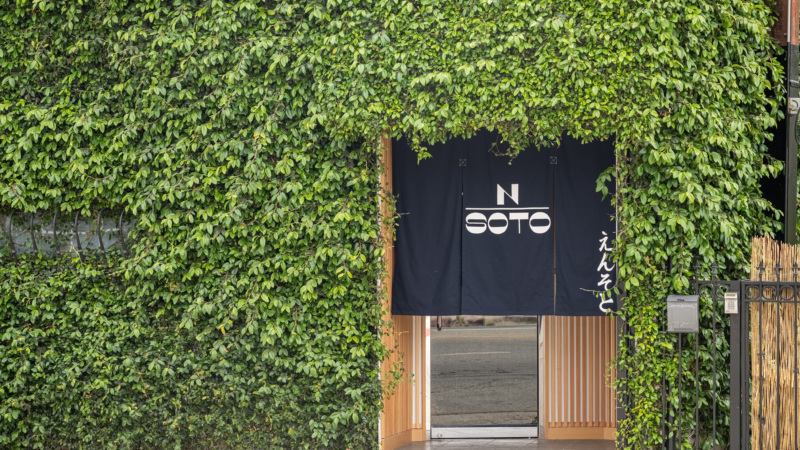
Niki Nakayama has a precise understanding of how L.A. likes to dine. Her restaurant, n/naka, effectively defined kaiseki dining in the city. Yet she and her wife and partner Carole Iida-Nakayama don’t stand on ceremony — especially at their izakaya. Top chefs have learned to dabble in less fussy options, and on the surface, the menu at N/Soto sounds almost routine: nigiri and sashimi; grilled skewers; karaage; chawanmushi. That obscures the craftsmanship you’ll find at its highest level. (Get the housemade tofu.) It also obscures how downright fun it is to dine here. The duo take “izakaya” at face value; food on the plate can feel almost thrown together, until of course you drink some sake; take a bit of, say, miso-baked bone marrow; and are struck silent. Nakayama once worked at Mori Sushi, where Morihiro Onodera low-key built a pinnacle of L.A. Japanese cooking. N/Soto follows in that wonderful tradition.

20. Razza JERSEY CITY, N.J.
The anointing of Razza, across the Hudson River, as the best pizza in New York a few years ago was less a shocker than an affirmation of chef Dan Richer’s long obsession with every detail of pizza-making, and fermentation in general. This includes a crust that has become the ür-crust for picky pizza types, because Richer is a baker at heart, but also toppings that feel perfectly proportional, as with the Santo, which uses sausage and chile oil to dazzling effect, or the tomato pie, which uses both yellow and red versions for a twist on the Jersey classic. But then there are things like Richer’s butter tasting — a spreadable demonstration of fermentation nuances. And even a dish as simple as chickpeas with olive oil and Parmesan find depth and perfection here. Richer, like fellow travelers such as Anthony Mangieri of Una Pizza Napoletana, shows that inspiration and a precise eye for detail can only improve even this most classic of American foods.
21. Maty’s MIAMI | Midtown
The Chang family made Nikkei cooking the toast of Miami with their much loved Itamae, and also with recently returned Itamae AO. But chef Valerie Chang went a different direction from her brother Nando when she opened Maty’s last year. This 150-seat spot reflects Valerie’s own cooking style — and inspiration from the women of the family, including her grandmother Marta. If the menu feels more traditionally Peruvian, that’s by design — but consider these, perhaps, the ideals of classic Peruvian dishes, including two kinds of cebiche, and an epic oxtail saltado that can (and should) be the centerpiece of your table. Her finest touches might come around the edges, as with an aji amarillo beurre blanc that graces the whole dorade, or kale and pesto that directs the chicken Milanesa in a unique direction, and ethereal tortitas with seasonal pickles that should be the start to any meal. Importantly, Maty’s is a restaurant that feels entirely of Miami — gazing toward South America, but also embracing the rest of the globe.
22. Penny NEW YORK | East Village
Again, we believe in not putting too much into nomenclature, and Joshua Pinsky and Chase Sinzer seem to be of a similar view. Is the Momofuku Ko alums’ hit Claud really just a “wine bar”? Is its upstairs sibling Penny just a “seafood counter”? In either case, “kinda.” Also, “Who cares?” After all, New Yorkers quickly caught on to Pinsky’s epic cooking at Claud; the same is happening at Penny. On its face, sure, seafood counter, with the “ice box,” a seafood tower that’s a pinnacle of the form. But also bone-in Dover sole with bone marrow, pitch-perfect lobster with brown-butter vinegar, and a crave-worthy ice cream sandwich (!). And, importantly, an erudite wine list that mirrors Sinzer’s great work downstairs. The deep cuts of Loire and Burgundy whites (get one of Jérôme Bretaudeau’s Muscadets) reflect the seafood assignment, but reds get love too — all in a tilt that embraces natural-wine cult hits and key references alike. As with similarly finessed spots like Gem Wine, Penny allows you to graze — or eat with gusto — drink a bit, and move on into your evening. And spots this rewarding don’t need to wear labels.
23. Pagu BOSTON | Central Square
Pagu’s creation story is perhaps a perfect distillation of third (or maybe fourth) culture cooking on these shores. Tracy Chang came into restaurants via her Taiwanese grandmother, who opened one of Boston’s more prominent Japanese restaurants in the 1980s. She expanded that by cooking in Saint Sebastian and at the city’s influential O Ya, and somehow stitched it all together into a menu that can segue from pan con tomate to green-pea bao with pickled papaya, from the ramen she pioneered during a hit pop-up to a vegetable paella, and of course the suckling pig that comes with romesco, kimchi, and cranberry hoisin sauce. And it’s not just the fluency of Chang’s cooking that resonates — there’s also her commitment to food insecurity and building community. Often Pagu is portrayed as tapas with a twist; instead you might consider it the very model of what a restaurant can be in an era when the old rules no longer apply.
24. Mi Tocaya Antojería CHICAGO | Logan Square
Chef Diana Davila remains at the forefront of the new guard of Mexican American cuisine, a position that shows itself best through both the sheer diversity of her menu at Mi Tocaya, a standout in a city that has long been pushing Mexican cooking forward, but also the stories she weaves into the descriptions. You might see her fondness for Baja reflected in an aguachile punched with shrimp and uni, or romanesco tossed in a version of sikil pak, the ancient seed-based spread, made with gooseberries. The steak burrito that’s a modern Chicago classic remains, too, along with their take on quesabirria, using traditional goat and aged melted queso. Heritage and sources matter a lot here, with plenty of corn and other ingredients coming from single origins, but the culinary language always feels familiar.
25. Audrey NASHVILLE | McFerrin Park
While Sean Brock has largely defined his career by redrawing the lines of modern Southern cooking — at McCrady’s and Husk in Charleston, more recently in Nashville, including with his restaurant June, perhaps the apotheosis of his quest to defend the tasting menu, specifically with his unique prism. But perhaps no restaurant of his more captures his quest to define a sense of place than Audrey. This long-awaited project offers a meditation on the rural Appalachian cooking of Brock’s childhood. Skillet cornbread comes with sour corn butter, country ham is garnished with bee pollen, chicken and dumplings is gussied up with fines herbes and black truffle. And of course because this is Brock, those descriptions don’t begin to capture the kitchen wizardry he has afoot. In other hands, this low-brought-high vision might feel forced — especially given the tasting-menu that Brock encourages here. But here, he’s operating from a deep place of love, and so the net effect is more to show that even the humblest American cooking can inform a rarified result.
26. CheLi – Manhattan East Village
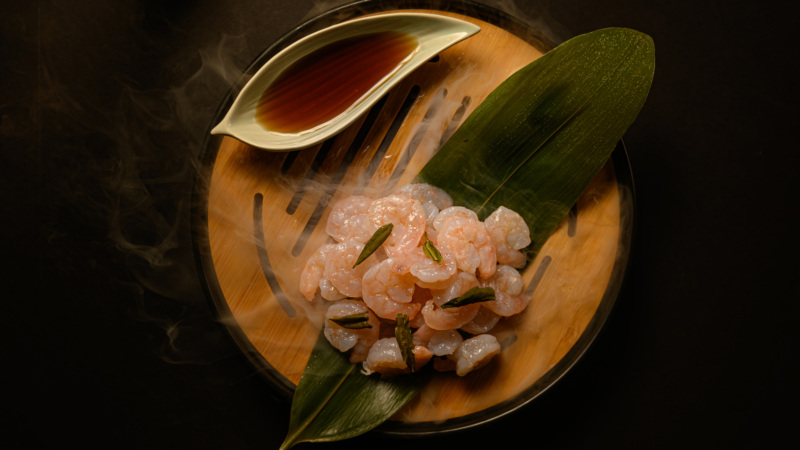
If Chinese restaurants still get stuck with tired narratives — humble mom-and-pop, or soaring to second-generation gastronomic wonder? — CheLi represents a third path: distinctive, ambitious, regionally rooted in China today. In its case, the hook is the food of Jiangnan province; the only giveaway that you might not be in Shanghai is a faux-rustic village decor. But the (long) menu moves from strength to strength: Launch into classic starters like wine-soaked chicken, or linger on exceptional dim sum (pro tip: get the black-swan durian crisps), but make sure to dive deeper — for the now well-known longjing shrimp, poached in tea and served in a fog of dry ice; or a sweet-and-sour “squirrel” fish, so named for its flipped-up tail. In addition to a Flushing outpost, the location on St. Marks Place, in the heart of old East Village punk territory, evidences how NYC has embraced a grown-up, expansive view of Chinese cooking.

27. Lowland CHARLESTON | Lower King
For two decades, visitors to Charleston have made their way to FIG to experience a quintessence of modern, market-driven Southern cooking. And in recent years, it was chef Jason Stanhope who drove much of the energy behind the menu. So Stanhope forging out on his own would reasonably be important news — which is why Lowland, tucked into a carriage house just off King Street, is an especially worthy destination. The name, clearly, refers to the city’s Lowcountry environs, and Stanhope’s menu might feel familiar to regular visitors: grilled wahoo with an onion soubise and ramps; a biscuit from baker Cheryl Day, with farmer cheese and pepper jelly; chicken skewers with a furikake based around popped sorghum. The drinks encompass brown liquor, as well as a deft cross-section of the new Californian and French repertoire. This is Stanhope continuing to frame what the Holy City does best, and shows that the culinary revolution that FIG’s Mike Lata ushered in here continues to have legs.
28. Hiraya Restaurant WASHINGTON, D.C. | H Street Corridor
It’s not that chef Paolo Dungca lacks for ambition — his career has taken him through the kitchens of key D.C. spots like Restaurant Eve, to say nothing of the groundbreaking neo-Filipino restaurant Bad Saint. But like its spiritual sibling Kasama in Chicago, the all-day flexibility at Hiraya, which functions as a daytime cafe in addition to a full dinner service upstairs, is a reflection of Dungca’s broader vision. (His previous gig at Pogiboy yielded a pork burger with an ube bun that made the cover of Food & Wine.) While the technicolor lattes and porky breakfasts are winning, it is Dungca’s tasting menu that captures this current moment of Filipino cooking. The “dinuguan” pork chop approximates the pork-blood darkness of the original (but uses burnt coconut instead). The adobong pusit paella perfectly captures how Spanish traditions were deftly brought into the Filipino kitchen. All told, it reflects how Dungca lives on a wonderful edge between nuance and hedonism; look no further than the bright purple bun.
29. Copra SAN FRANCISCO | Japantown
Copra is the latest addition to the Bay Area’s remarkable (if under-advertised) depth of Indian restaurants. It also twists together several relevant strands: Housed in the palatial space on Fillmore where Dosa used to be, it is run by Srijith Gopinathan and Ayesha Thapar, who also own Ettan in Palo Alto. Gopinathan is known as well for his cooking at Campton Place, which for years has quietly served up standout haute Cal-Indian fare. The focus at Copra is on India’s southern tip, including the state of Kerala, and similar cuisine from Sri Lanka. Hence the appearance of dried coconut, black curries, jackfruit and the like; and dishes like roast chicken inspired by the Tamil Nadu city of Dindigul. Those flavors echo on the cocktail list, and with a wine selection assembled by Ceri Smith of Biondivino, this is a bold addition to San Francisco, and to the surging cohort of great South Asian restaurants opening across the country.
30. Boia De MIAMI | Buena Vista
There’s a reason this compact boîte in a strip mall in Little Haiti — accented with its neon exclamation point outside — has become an epicenter of modern Miami cooking, even drawing a Michelin star: chefs Alex Meyer and Luciana Giangrandi have found a particularly chill and South Floridian form of bistronomy, here channeled through astonishing takes on Italianate cooking. Their cooking is twisted nuovo Italian of the best sort: beef tartare gets the tonnato treatment; black tagliolini is punched up with crab and vin jaune; a fra diavolo take is applied to lamb ribs. The net effect is a refreshing prism on how Italian American cooking has evolved with confidence and verve. And the duo are keenly aware of this lineage, as with Luci’s chopped salad — their interpretation of Nancy Silverton’s perfect version at L.A.’s Mozza.
31. Saffron Nola NEW ORLEANS | Uptown
The growing focus on Indian cuisine across the country is long overdue — and it’s worth acknowledging pioneers who have grounded their cooking in their communities. That’s what the Vilkhu family did when it opened Saffron in 2017; by that point they’d been catering around New Orleans for decades. (It’s no coincidence their forthcoming project is based on their years in Gretna, across the river.) And it’s no surprise that, as with Dakar NOLA, the city is present in the restaurant’s name — here, too, is a personal interpretation of cooking very much of a place: an oyster roast with curry leaf, lamb chops with a rogan josh sauce marinated in rum; a Kerala curry that brims with Gulf seafood. Add in a wonderfully progressive wine list and cocktails that similarly bridge traditions (a kari colada with saffron) and you have a restaurant that shows how the flavors of New Orleans have never, and will never, be static.
32. ōkta OR WINE COUNTRY | McMinnville
A trip to wine country for a cerebral tasting-menu meal may be its own sort of gastronomic rite of passage in a certain West Coast state. Typically that state hasn’t been Oregon. But Okta is very much an experience born of the Pacific Northwest — specifically McMinnville, where dining options have generally trended more to pub fare. This is also a return to the state for Matthew Lightner, who once cooked at Portland mainstay Castagna, before a stint at New York’s Atera, which informs the sleek, minimal style here. The forms may tilt toward New Nordic, but the results feel almost ethereal, and ingredients — including those from the restaurant’s own regenerative-ag farm nearby — are precisely of place: burn morels, Dungeness crab, cool-weather produce like Kyoto carrots and Hakurei turnips. And downstairs is the Cellar, where an abbreviated tasting menu is on offer, as a means of downshifting. This is dining rooted in a specific destination, which is a tradition worth appreciating.
33. Dizengoff PHILADELPHIA | Center City
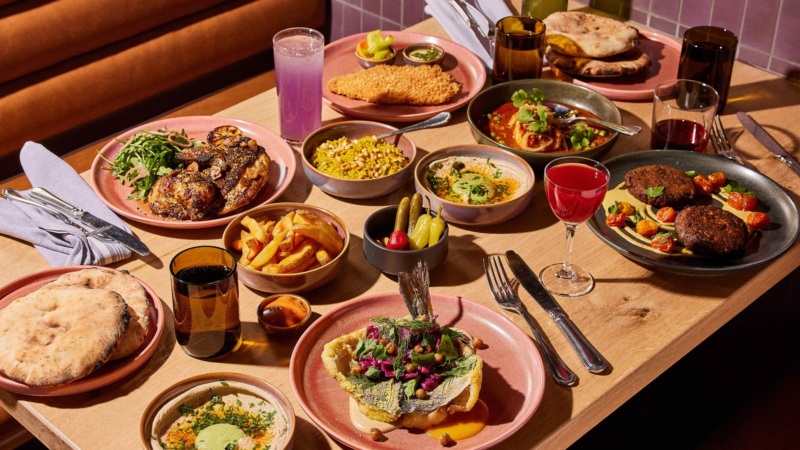
It’s now fair to say that we are, indeed, a Hummus Nation. (The market for it is predicted to double between 2019 and 2027.) That’s reflected in how many great chefs are committed to truly exceptional versions— whether Alon Shaya in New Orleans, Ayesha Nurdjaja at Shukette in New York, Zach Engel at Galit in Chicago, Michael Rafidi at D.C.’s Albi, and so on. But the great American hummus boom can at least partly be attributed to Philadelphia’s Michael Solomonov, who not only pioneered a focus on Middle Eastern cooking at Zahav, but also opened this hummusiya, which made the chickpea all but sacrosanct. A recent reopening features more space and technicolor decor, and while you can fully indulge in Yemenite braised beef or the chicken schnitzel that’s a Solomonov staple, hummus is why you’re here — creamy, texturally rapturous hummus. Any of its variations will be an object study the sublime, but, pro tip, the beef-topped hummus Yerushalmi shows how this can, indeed, be a perfect meal unto itself.

34. Underdog AUSTIN | Bouldin Creek
If a Korean-American-Australian wine bar hasn’t been on your dance card, well, now’s the time. In this case, the Korean American part comes from partner Claudia Lee, whose family runs sushi restaurants in L.A. The Australian element comes from Richard Hargreave, a longtime Momofuku alum, who assembled the wine program at L.A.’s Majordomo, among other places. Their teamwork results in offerings that might feel -ounce tomahawk. (It may be Austin, but it’s still Texas.) There’s an $85 tasting menu, and also a retail wine shop, and of course Hargreave’s ecumenical view of wine, which has yielded a selection that’s both focused and diverse. Somewhere around the time you encounter whites by the Roussillon stars Danjou-Banessy, or a lineup of top Beaujolais by Mee Godard, you realize that Lee and Hargreave have created is a quintessential example of that 2024 truism: that great restaurants indeed come in all shapes and sizes.
35. Daru WASHINGTON, D.C. | H Street Corridor
D.C. has a remarkable tradition of Indian cooking, one of the best places in the Western hemisphere to find it. And the community of chefs there has allowed for brilliant creations like Daru, opened by two veterans of the local industry: Suresh Sundas, formerly the tandoor chef at Rasika West End, where he worked with Dante Datta, a Bengali cocktail maestro who also worked at Ellē. The menu is willfully nontraditional in the best way, what with chicken tikka tacos and a reshmi kebab that incorporates blue cheese and sour cherries. Not everything strays so far from canon, as with a dough-topped wild mushroom biryani, but the net effect is the sort of restaurant that smiles politely at whatever you have to say about “authenticity,” and then serves you a bison momo, or one of Datta’s nuanced, spicy cocktails, and goes about its business being exactly what it wants to be.
36. Foxface Natural NEW YORK | East Village
The whole roasted fluke at Foxface is a force of nature in NYC dining. True, there’s nothing groundbreaking in the preparation; you could go several miles west to Newark’s Ironbound and get similarly Portuguese renditions. But David Santos is the sort of chef who finds the sublime in both simple and complex forms. His woodfired oven turns fish into fetish object. Santos, plus owners Sivan Lahat and Ori Kushnir, and new wine director Max Leleux (ex Ten Bells BK), also want diners to embrace the challenging. “Natural” nods to the leanings of the wine list, one of New York’s most thrilling right now. And despite headlines for, say, kangaroo tartare, the real complexity here is found, say, pastas such as malloreddus tossed with uni and saffron, a tribute to S.F.’s La Ciccia; or a tooth-edged spiral of girella with peas and blood sausage. Other seafood is similarly an edgy joy in Santos’ hands. (To serve gooseneck barnacles is a downright dare in these days of TikTok aesthetics.) That’s the real joy of Foxface — how it asserts itself, very much in the lineage of Santos’ former boss David Bouley, who set a template for offering bold magic on the plate.
37. Bronze WASHINGTON, D.C. | H Street
The restaurant as biography is ever more important nowadays, but Bronze has attempted something different: The restaurant as biographical fantasy — one that combines Afrofuturism, tales of the African diaspora and, importantly, the talents of executive chef Toya Henry, a Brooklyn native, and veteran D.C. restaurateur Keem Hughley, and their team. All that reasonably prompts more questions than answers, but the response can be found in dishes like braised oxtail pappardelle with dashi kombu or smoked snapper with callaloo relish — thoughtful, artful cooking that draws in inferences and references without feeling it has to be rooted in one specific foodway. Traditions are pulled in from Ghana, Nigeria, the Caribbean, the United States, and many other places, and all somehow melded together seamlessly. There are many standout examples today of Black restaurateurs defining their own path; Bronze continues to show that artistic vision can be as essential as personal history.
38. Troubadour Bread & Bistro CA WINE COUNTRY | Healdsburg
French cooking and California Wine Country aren’t exactly a new matchup (something about a laundry?) but a standout in the current French resurgence can be found … in a Healdsburg sandwich shop. By night, owners Sean McGaughey and Melissa Yanc, who also own the hit bakery Quail & Condor, turn their boulangerie into an homage to traditional French cooking. There’s deep talent here; the couple were among the many East Coast talents who went west to work at nearby Michelin-starred SingleThread. And Troubadour’s dinner service is essentially a nightly homage to Escoffier-era classics made current — duck à l’orange or halibut in en blanc sauce, all served on a mix-and-match of vintage gilded china, with a taut wine list that balances French gems and local standouts. If an original prix fixe might have felt a bit stuffy for Sonoma, there’s now à la carte three days a week, perfect to enjoy a dish or two with a bottle. Needless to say, don’t skip the bread — and if you’re there by day, don’t sleep on their sublime jambon beurre.
39. Stissing House UPSTATE N.Y. | Pine Plains
A revival of Colonial-era cooking was not likely on anybody’s dance card, but that has in fact come to be (see also the slow-burn success of Jody Williams’ Commerce Inn). This one can be credited to Clare de Boer, the respected English chef at New York’s King and Jupiter, who found a Revolutionary-era tavern a couple of hours north up the Taconic Parkway. The choice is perhaps more evident given de Boer’s history cooking at London’s River Cafe, a font of new British cooking, and Pine Plains’ location in the Hudson Valley, some of the world’s richest agricultural land. This reveals itself in dishes like pot-roasted vegetables with barley, and a halibut with butterball potatoes, artichoke and a salsa verde, along with hearty, archaic sounding fare like mussels cooked in cider, braised rabbit, and a substantial fish pie. This might all sound a bit simple, unless you’re familiar with de Boer’s cooking at King, which exulted in simple-sounding pleasures that were profound in their flavors. Stissing House yields much the same, except with an upstate prism — the sort of great country cooking that follows in the best tradition of a tavern welcome.
40. Jeju Restaurant PORTLAND | Central Eastside Portland

Peter Cho and his wife Sun Young Park have created an empire of Korean-inspired cooking in Portland, in an era when that country’s cuisine has reached critical mass on these shores. First came Han Oak, the house-party-slash-restaurant operating out of the couple’s own house; the indulgence factor amped up with their (recently closed) sequel Toki. Jeju is the logical next step, its name from the Korean island of that name, which has inspired other modern Korean spots (Jeju Noodle Bar and Haenyeo in New York, to name two). But inspiration for the $75 tasting menu comes from Korean barbecue — here it’s wood-fired, with a focus on whole-animal butchery and off-cuts (Cho was a protégé of chef April Bloomfield). KBBQ has certainly evolved beyond its original roots — witness the force of nature that is Côte — but at Jeju, it is practiced with both modernity and a legit farm-to-table ethos.













































































